Event Streaming with Kafka
Confluent Kafka and Its Offerings
Demo Getting Started with Confluent for Free
Now that you know what Confluent adds on top of Apache Kafka, let's walk through signing up for Confluent Cloud’s Free Tier and launching a managed Kafka cluster in minutes.
1. Sign Up for the Free Tier
- Open your browser and go to Confluent Cloud.
- Click Start for Free on the landing page.
- Ensure Cloud (default) is selected instead of Self-Managed.
- You’ll receive $400 in credits valid for 30 days—perfect for experimenting with Kafka.
Warning
Confluent will authorize $1 on your card to verify it but won’t charge you as long as you stay within $400 or the 30-day window.
- Log in with Google (recommended) or provide your email, full name, company, country, and credit-card details.
- After validation, you’ll land on your Confluent Cloud dashboard.
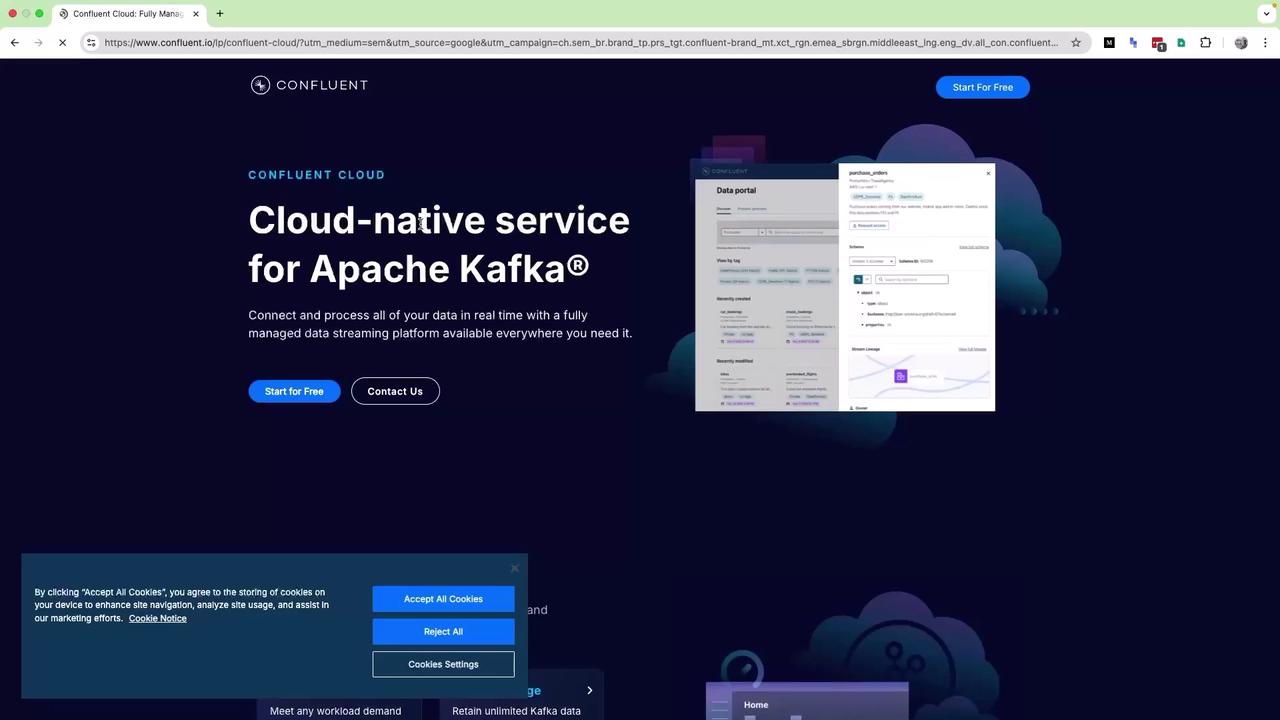
2. Create Your First Kafka Cluster
- In the dashboard sidebar, click Environment → Default environment.
- Click Create a Cluster.
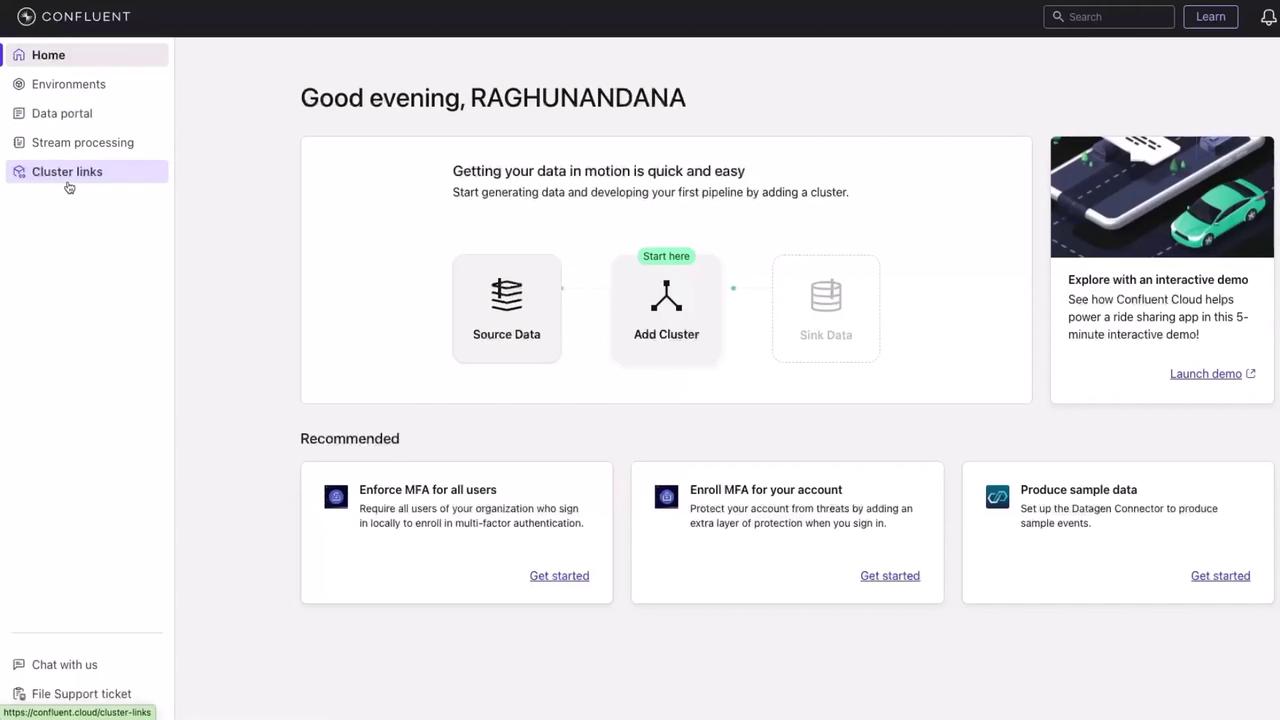
- Select the Basic plan and click Begin Configuration.

- Choose your Cloud provider (AWS, GCP, or Azure) and Region.
Note
Selecting a region tells Confluent where to launch its managed nodes—it doesn’t provision resources in your own cloud account.
- Name your cluster (e.g., Kafka cluster) and click Launch Cluster.
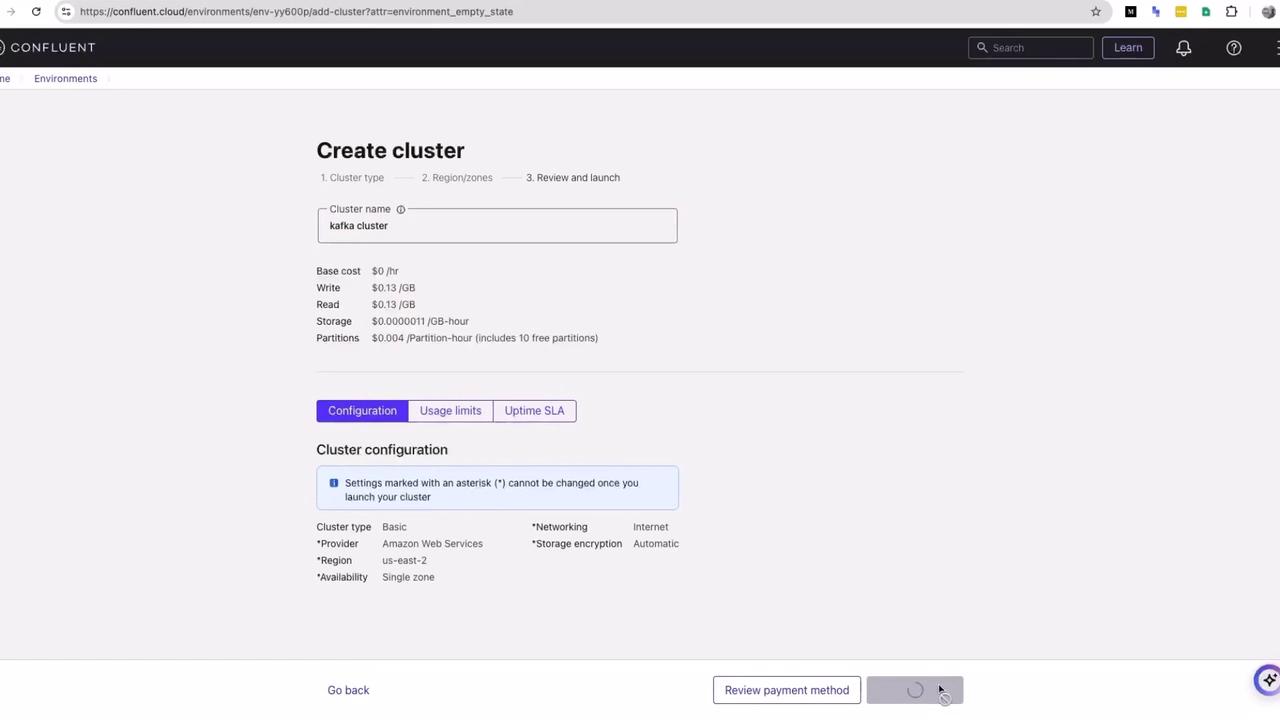
- Wait a few minutes for the status to change to Running.
3. Overview and Producing Sample Data
On the cluster overview page, you can configure connectors, clients, and even generate sample events automatically:
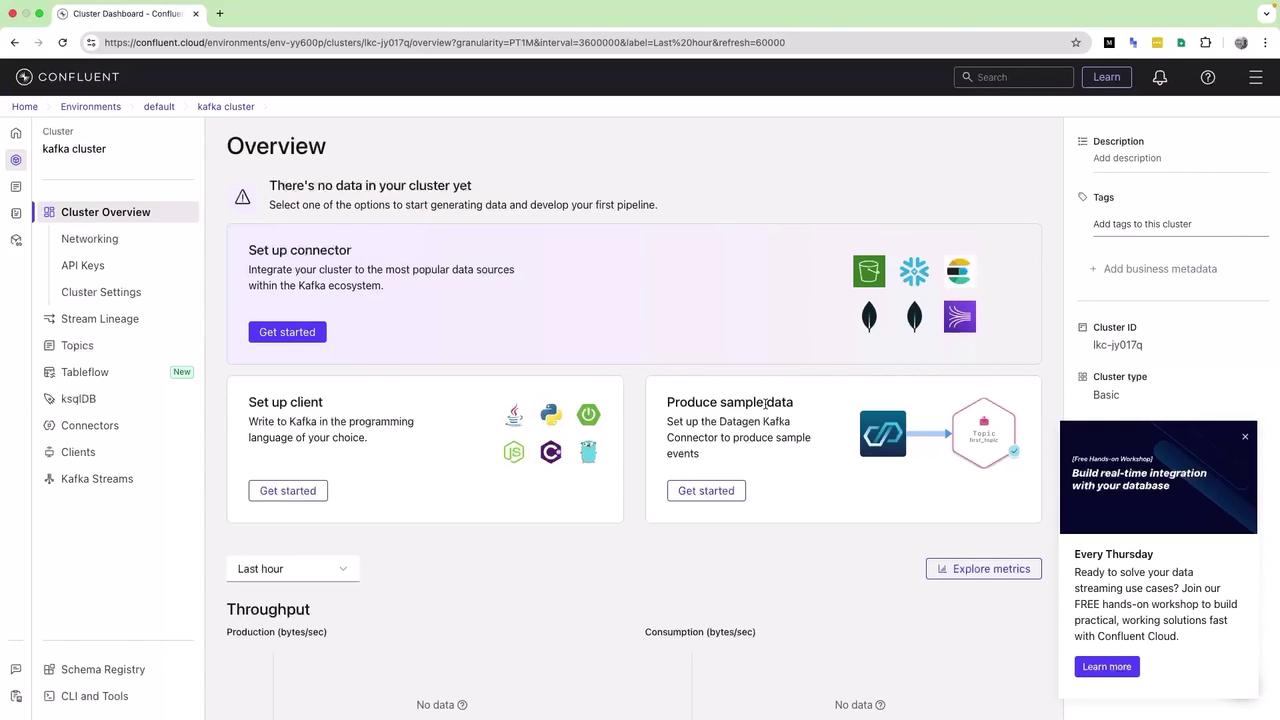
Click Produce Sample Data to see predefined event templates, or continue below to create your own topic.
4. Create a Kafka Topic
- In the left menu, select Topics → Create topic.
- Enter your topic name (e.g., random-topic).
- Leave Partitions at the default (6) and click Create with defaults → Skip.
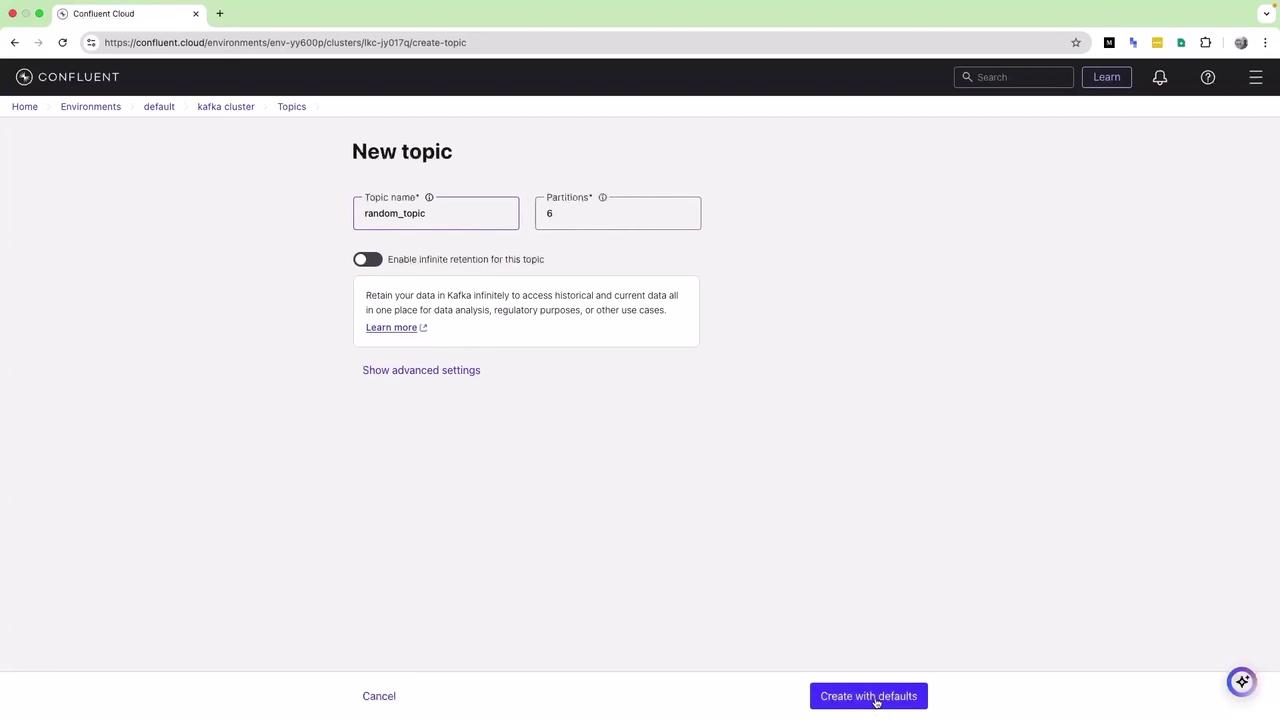
Your topic is now ready to receive messages.
5. Launch Sample Data
- Go back to the Overview page.
- Under Produce Sample Data, click Get started.
- Select a template (e.g., Stock trade) and hit Launch.
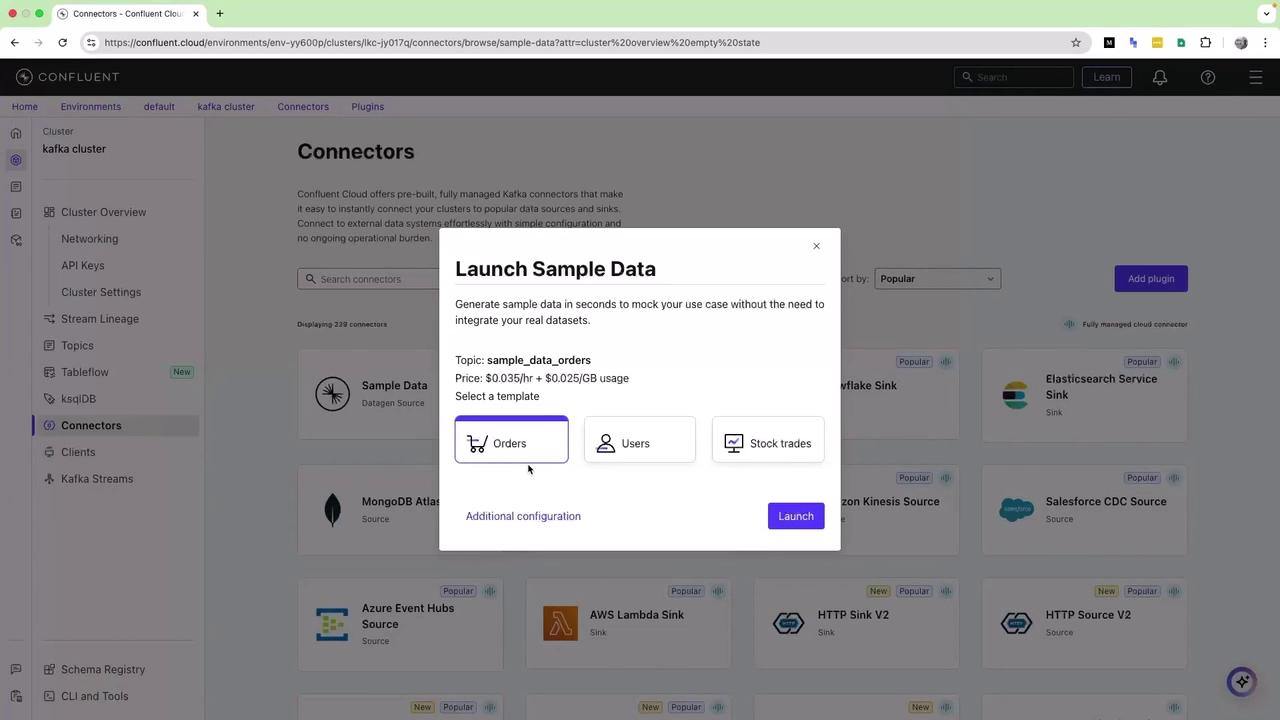
Confluent creates its own topic (e.g., sample_data_stock_trade) and provisions a connector to push events:
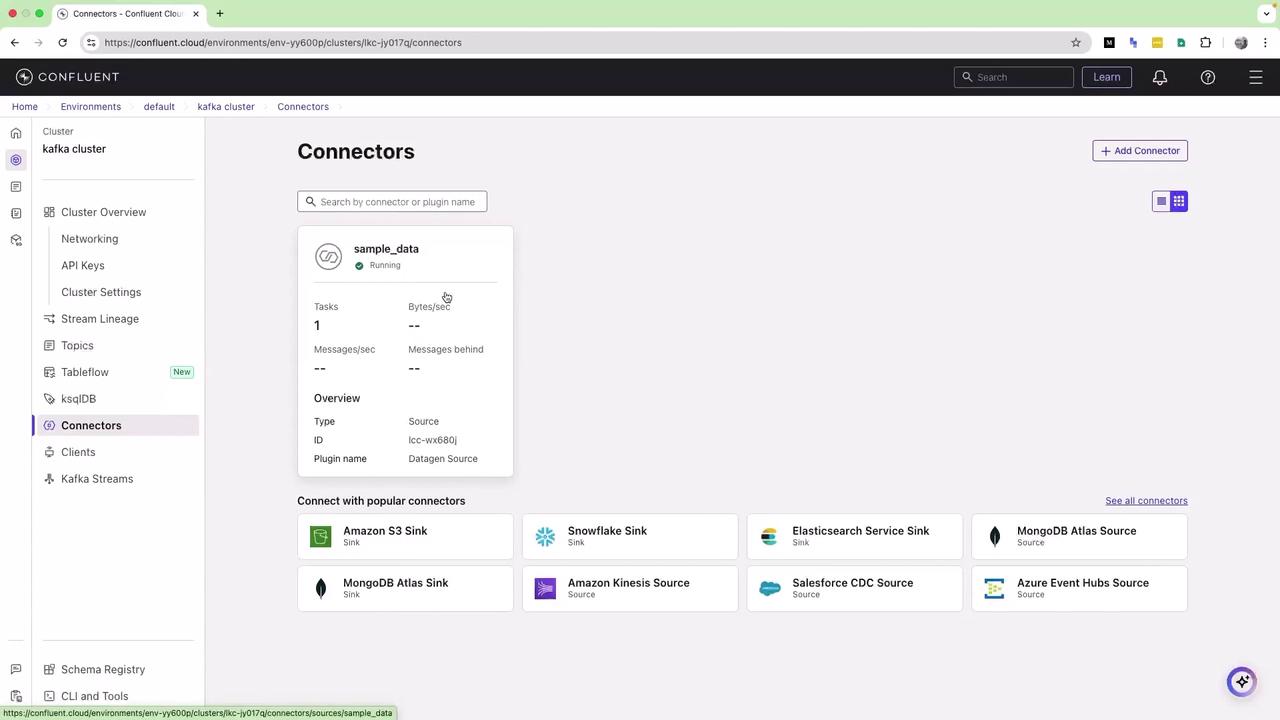
Wait until the connector status is Running.
6. View the Produced Messages
- In Topics, click the sample-data topic (e.g.,
sample_data_stock_trades). - Wait a few seconds for messages to populate.
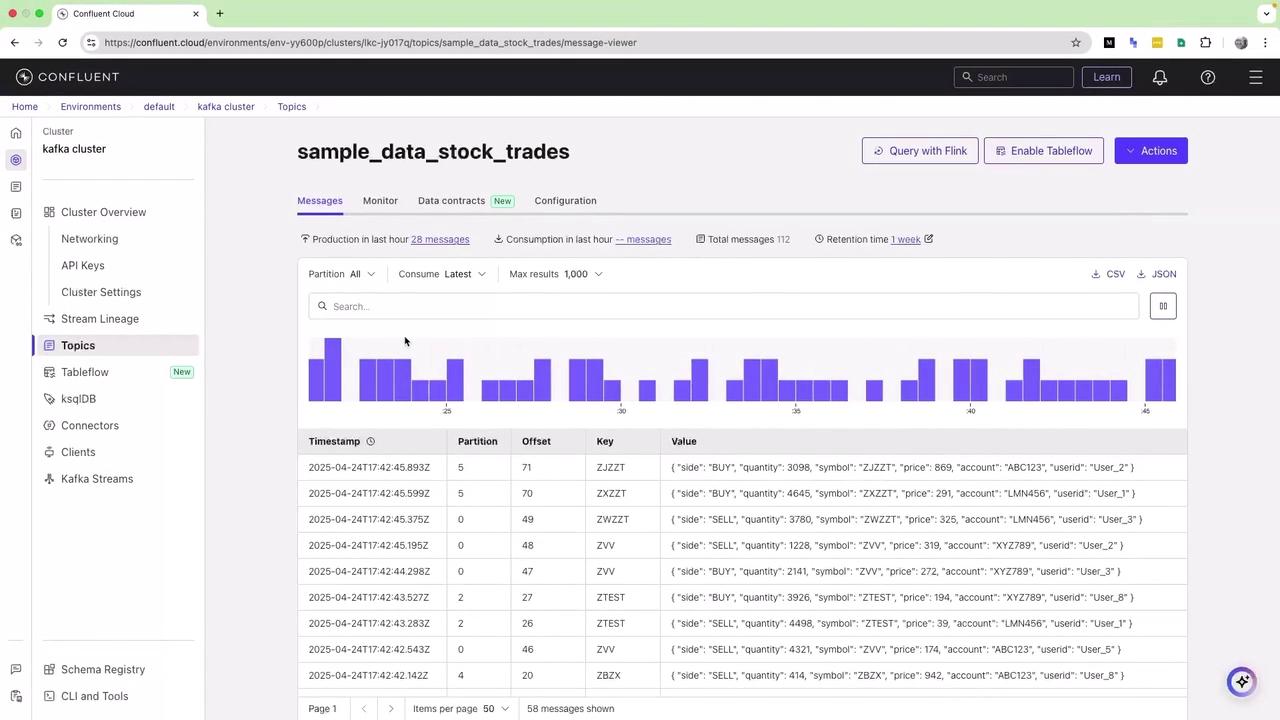
You’ll see a live table of messages with timestamp, partition, offset, key, and value fields.
7. Set Up a Sink Connector
Stream your Kafka topic data to an external system:
- Click Connectors in the sidebar.
- Under Sink connectors, choose Amazon S3 Sink (or another sink).
- Select the topic(s) and click Continue.
- Enter your AWS credentials and S3 bucket details.
- Finish the setup to start streaming data to S3.
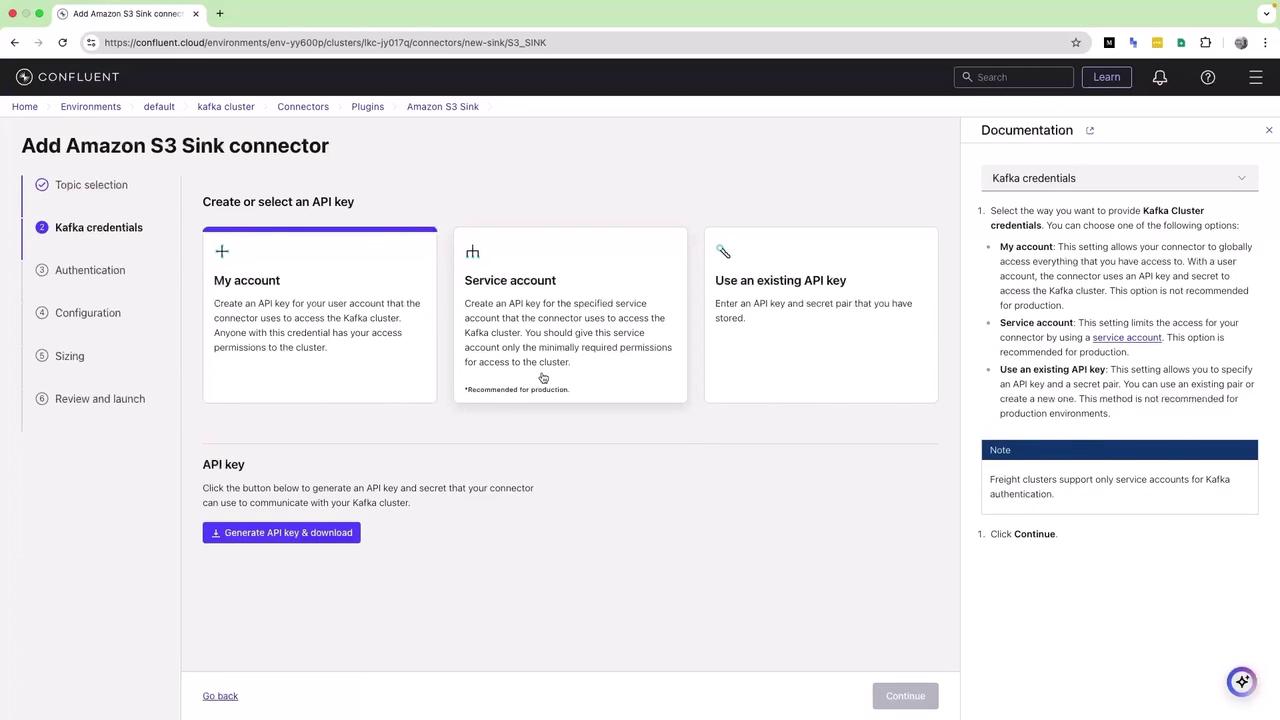
Note
In this demo, we skip the full AWS configuration—refer to the Confluent AWS Sink Connector guide for details.
8. Monitor Topic Metrics and Settings
- Go to Topics → your topic → Monitor to view production and consumption graphs.
- Open Settings to adjust partitions, retention, cleanup policy, and more.
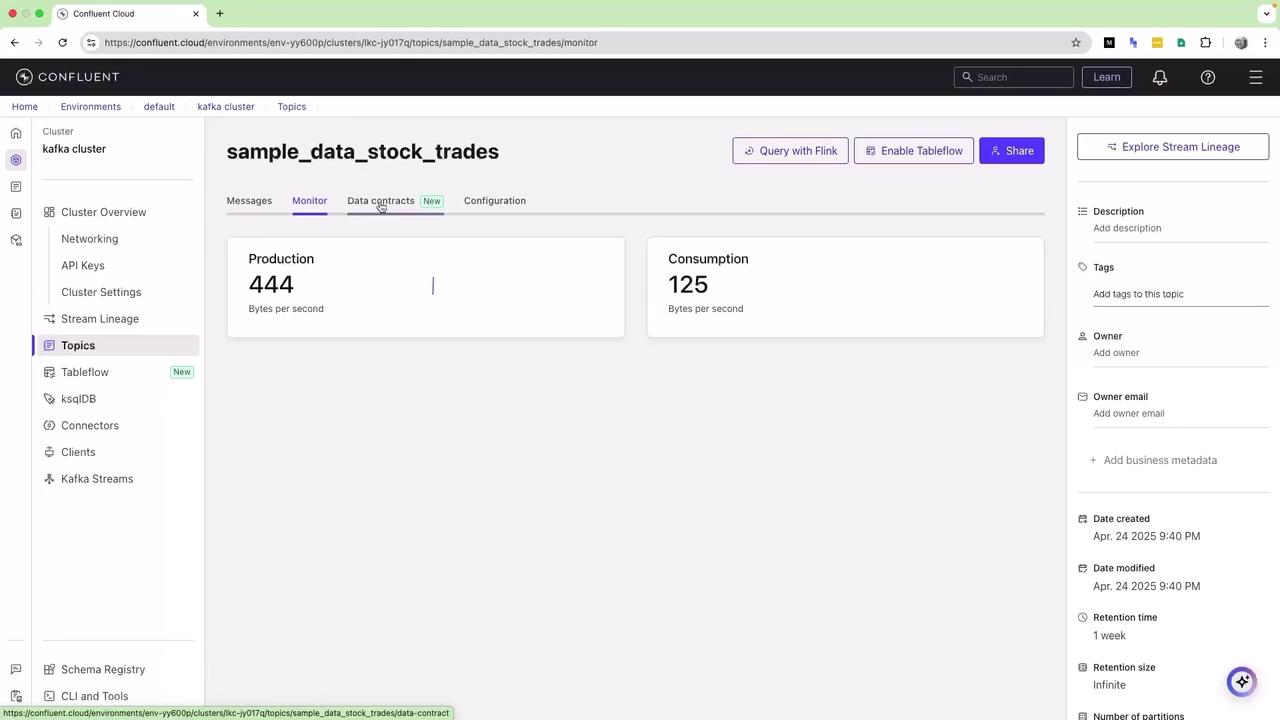
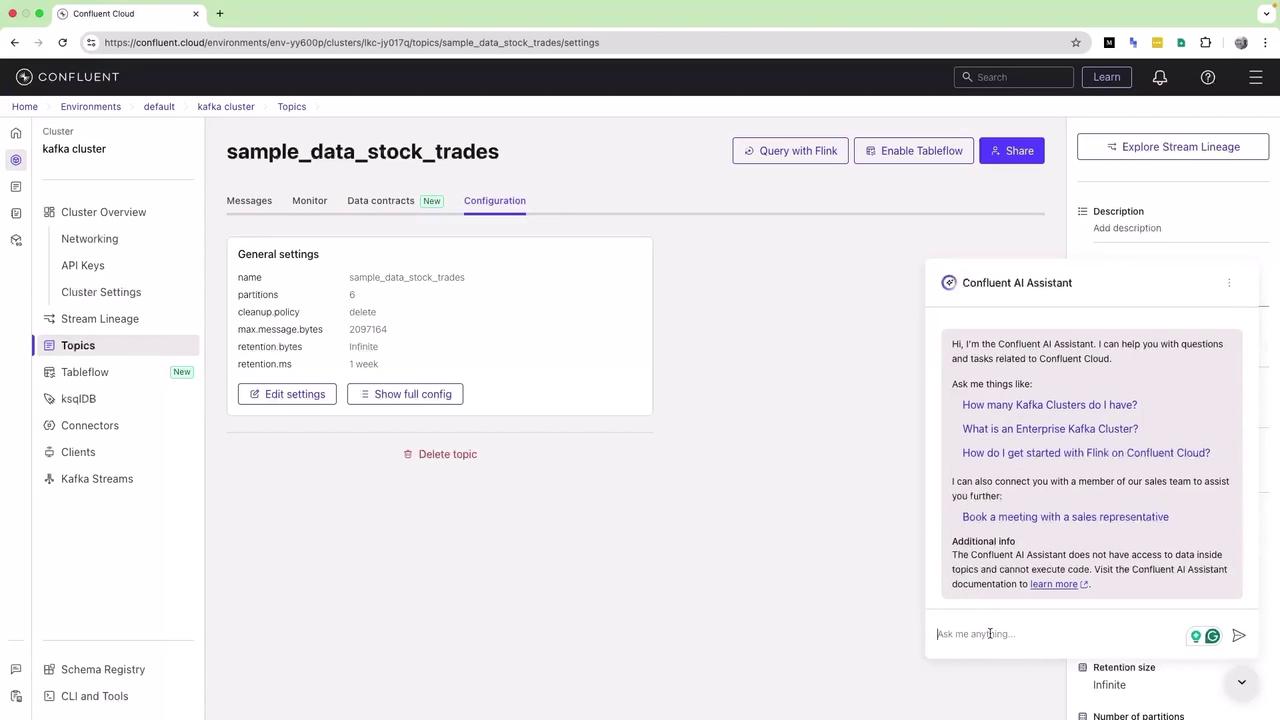
Confluent’s AI Assistant can help troubleshoot configuration or performance issues in real time.
With these steps, you’ve successfully registered for Confluent Cloud’s free tier, launched a Kafka cluster, produced and viewed sample data, and configured a sink connector. Enjoy exploring Confluent’s advanced features and integrations!
Additional Resources
Watch Video
Watch video content